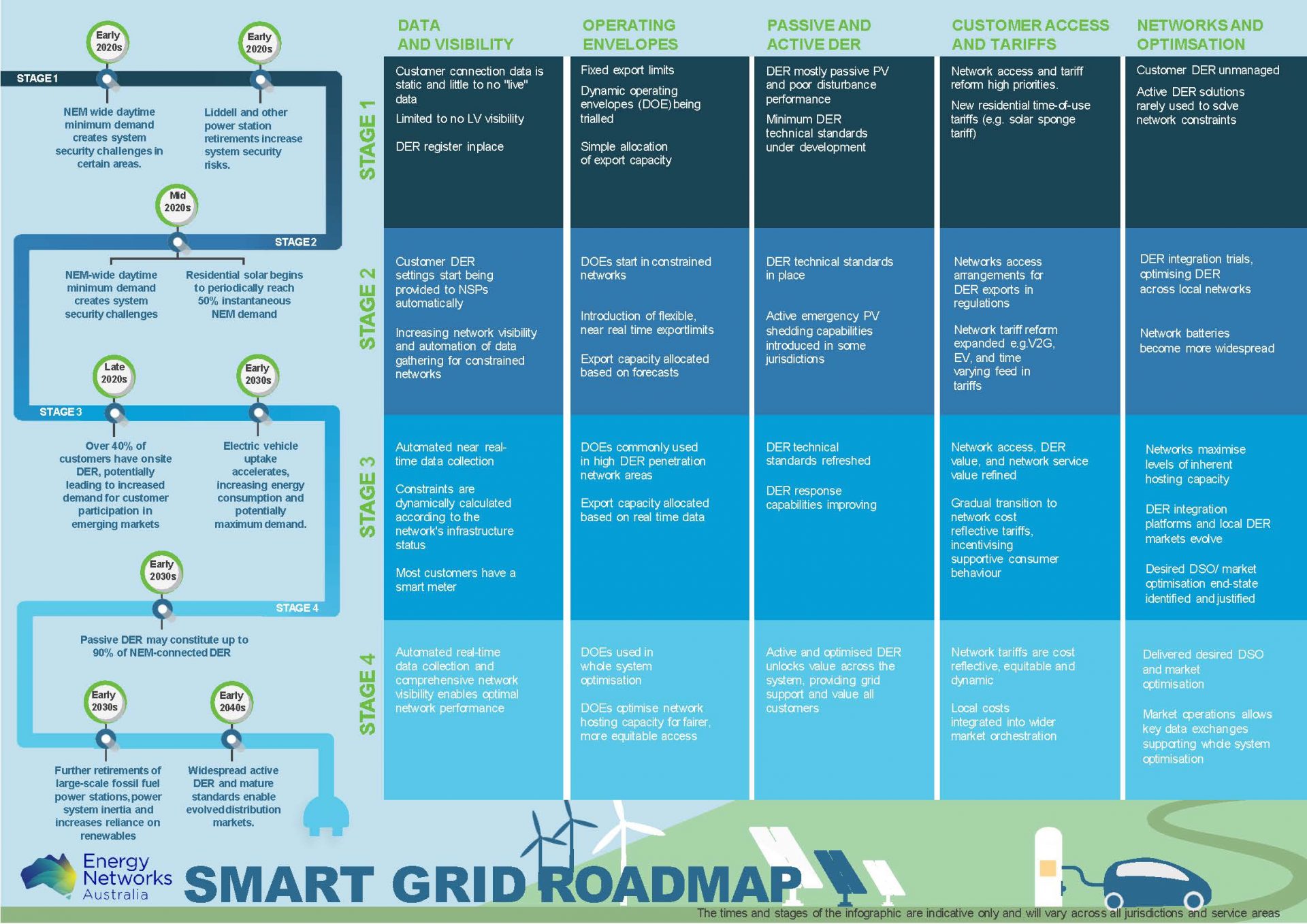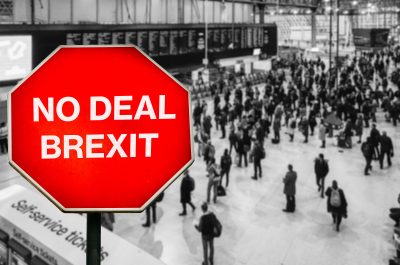The four stages to a truly smart grid
As Australia slowly emerges from COVID-19 and embarks on economic recovery, we could be forgiven for craving more predictability. The impact of the pandemic has seen fundamental shifts in the world as we knew it. In the energy space, a constant continues to be the juggernaut that is Distributed Energy Resources (DER). The uptake of rooftop solar and increasingly storage devices is an unstoppable trend that is radically altering the energy landscape at home and internationally.
This DER uptake is forcing rapid transformation of a century-old electricity system. With so much change in the air, making a prediction is fraught with the risks of the unknown, but supported by an international review of papers, reports, trials and subject matter experts we feel confident that our Smart Grid Roadmap is pretty close to the mark.
At a glance
In developing the roadmap, Energy Networks Australia (ENA) considered the likely trajectory of DER and what kinds of capabilities might be expected and required with the information we have now. This is organised into key streams and linked to indicative timeframes and milestones in four stages over the next 20+ years.
The streams comprise:
- Data and Visibility – To make the right decisions, distribution network service providers (DNSPs) need visibility, basically that’s feedback telling them what is happening on their network and what is available in the metaphorical “toolbox” to address issues – like voltage spikes for example.
- Operating Envelopes – Similar to the stream above, it is important to understand the physical limits of the network assets. There’s no point trying to export 20MW of solar PV if the conductor the solar is connected to can only handle 5MW.
- Passive and Active DER – A critical question is “Is the DER controllable (active)?”. Otherwise, it might be as useful as a car without a steering wheel, it’ll get you from A to B only if you’re pointed in exactly the right direction.
- Pricing and Access for customers – This stream is about the equity and fairness of integrating DER costs over the next two decades, a topic I’ve previously written on.
- Networks and Optimisation – This takes a holistic view of how optimisation and integration of DER is achieved from where we are now (unevenly distributed, passive, invisible DER), to a future where DER is ubiquitous, active and optimises the value chain from customers, networks and wholesale markets.
This is not a definitive list, but we felt these streams represent the most easily grouped and critical aspects of DER Integration over the coming decades.
Our assumptions and what to keep in mind
As you consider the timeline you will note none of the dates are definitive. The reason for using timeframes rather than specific years is twofold.
Firstly, the pace of (technical, regulatory and economic) change is constantly taking unexpected turns and it is hard to firmly pin down exact ranges, let alone specific years.
Secondly and related to above, the stages are also connected to the fact different jurisdictions will experience the same or different issues at different times. For example, AEMO has predicted minimum demand issues in South Australia now and increasing risks for Queensland and Victoria in the next few years.
This means the roadmap we’ve outlined will never be 100 per cent applicable to all stakeholders, at all times. It offers pragmatic expectations of general Australian trends and how and when they might manifest. It may provide some assistance in identifying where stakeholders are on the journey i.e. if I am here, then this is what I should expect/think about in the next few years.
In developing the roadmap infographic, we also considered what is happening in other countries and how similar lessons might be applied to the Australian context. One example is the competing attractions of a total Transmission System Operator (TSO) versus a total Distribution System Operation (DSO)1. This is something we also explored in the Open Energy Networks (OpEN) project.
It’s important to recognise all these streams are interconnected – what affects one will likely affect all others and cause a ripple of unexpected consequences. Having said that, we feel reasonably comfortable we’ve covered the most likely scenarios based on what we know now.
The only constant is change
While we have done our best to incorporate our learnings to date, it is inevitable that externalities will always change the outcome. For instance, quantum computing is being developed now and could change the whole game, but will it become commercially viable and deployed within 10 years? Hard to say.
One thing that has become very clear from our work developing this roadmap is that while distribution markets offer an exciting future, now and for the next five-ish years the big challenge will continue to be the ongoing growth of passive solar and the system challenges that creates.
Rest assured we at ENA and our members will be constantly refining and testing what we “know” against the latest developments in industry to continue providing the most practical, cost-efficient approach to deliver what our customers want.
So, on that note I’ll leave you with this great line from the indomitable Mark Twain “Prediction is difficult, particularly when it involves the future”.



